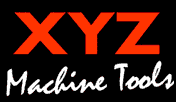The National Centre for Eye Proton Therapy, part of The Clatterbridge Cancer Centre NHS Foundation Trust’s Wirral campus, is a world leader for the treatment of rare eye cancers and is unique within the UK. The advantage of proton treatment is that the penetration depth of the 60 MeV proton beam can be controlled and only has a maximum range of 31mm in water, making it ideally suitable for treating any position within the eye and, in many cases preventing the complete removal of a patient’s eye. Patients require four treatments over four consecutive days that each take just 20 minutes. Key to the success of that treatment is a small brass component called a Collimator, tailor-made to shape the beam to cover a specific tumour, while protecting the surrounding area. These Collimators are now being machined using the centre’s new XYZ 500 LR vertical machining centre, in a cycle time that is 95 per cent shorter than previously achieved.


Prior to treatment commencing a patient has the affected eye scanned to precisely identify the size and position of the tumour. That scan is converted using some bespoke software to create a DXF file, which is then processed by the Siemens CAD reader to generate the tool paths for the XYZ 500 LR. The only input required from the centre’s Lead Engineering Technologist, Peter Pryce, is to input a variable scribed line, patient name and number to be engraved and, on some parts, a tapped hole is required. From receiving the scanned data to finished part now takes between 15 and 20 minutes, with less than seven of those minutes actual machining time. Prior to the arrival of the XYZ 500 LR, the machining alone would have taken over two hours to complete.
This significant time saving has two major benefits. First, it frees up time in the workshop to carry out other tasks, and second, on those occasions where a quick turnaround is required, the Collimator can be completed in the time it takes the radiographer to set up the Proton machine and prepare the patient for treatment. “We were constrained by the design of our previous machine, which lacked a toolchanger and we were not able to run it at the cutting data we can achieve on the XYZ 500 LR,” says Peter.

Peter Pryce with the XYZ 500 LR vertical machining centre on which the National Centre for Eye Proton Therapy are machining the precision collimators for the treatment of eye cancers
The XYZ 500 LR is the smallest of the four machine Linear Rail technology machining centres from XYZ Machine Tools. While relatively compact with a footprint of 1,660 x 1,860 x 2,300 mm it doesn’t lack in capability. An 18 hp (13kW), 8000 revs/min, BT 40 spindle is supported by a 12 position tool carousel, with a maximum tool weight of 6 kg. Table size is 580 x 400 mm with a maximum load of 250 kg, with axis travels of 510 by 400 by 450 mm in the X, Y and Z axes. A fourth axis rotary table is an option, along with Renishaw or Heidenhain tool setting probe. Control is provided by the popular Siemens 828D control.
The ease of use of the Siemens control was a boon to Peter, who by his own admission hadn’t done any serious CNC programming since his apprenticeship back in the late 1970s! “The two day on-site training with XYZ’s Mark Higson was fantastic and was enhanced by Mark doing preliminary work on part programs before he arrived. He was also impressed by the fact we had all the tooling and workholding from Ceratizit in place, so we were ready to go as soon as he arrived.” Training wasn’t the only element of the machine purchase that impressed Peter, from the initial sales discussion through to machine installation everything went like clockwork. “Our location isn’t designed as a workshop, so no large doors to gain access. The machine had to be stripped to get it in position and the delivery team did an amazing job.”

